Madrid
Top-Rated Tourist Attractions in Madrid
Full of energy and packed with cultural attractions, Madrid is a modern metropolis that offers a taste of the real Spain. Wide avenues are congested with traffic, but beautiful parks break up the urban sprawl. Madrid doesn't have the traditional charm of Andalusia or the beauty of Barcelona, instead, it offers exciting atmosphere. The city is constantly buzzing with activity and there are so many things to see and do that tourists will be spoiled for choice. The world-class Prado Museum displays an endless array of masterpieces created during the Golden Age of Spain, and the 18th-century Royal Palace rivals the magnificent Château de Versailles. Save energy for the evening, when the city really comes to life. Madrileños love going out on the town, and the paseo por la noche (evening stroll) is a cherished ritual. If possible, avoid visiting during summer when the heat is oppressive. Spring or fall are the best times to appreciate Madrid.
1 Prado Museum
A truly world-class museum, the Prado Museum has a collection of more than 5,000 paintings that rivals the Louvre collection in Paris. Spanish paintings from the 12th century to the early 19th century form the majority of the collection, and many are famous masterpieces. The assortment of paintings by Francisco de Goya includes a remarkable 140 works. The collection also covers Italian, Flemish, French, British, and German paintings as well as Neoclassical Italian sculptures.
The Prado Museum displays around 2,300 pieces of the collection in more than 100 rooms on three floors. Trying to see it all in one visit can be daunting, but it's possible to focus on a specific itinerary of masterpieces. The Prado suggests "routes" (self-guided tours) of specific works. These routes showcase the most renowned pieces in the collection including the famous painting of the Prado, Las Meninas. This magnificent painting of the Spanish royal family of Felipe IV was created by Velázquez in 1656. Other must-see works among the museum's top 50 masterpieces include the The Annunciation by Fra Angelico, Christ Washing the Disciples' Feet by Tintoretto, The Descent from the Cross by Rogier van der Weyden, Jacob's Dream by José de Ribera, The Third of May by Goya, The Immaculate Conception by Murillo, the Self Portrait by Dürer, Adoration of the Shepherds by El Greco, Parnassus by Poussin, and The Garden of Earthly Delights by Bosch.
Visitors can also opt to use the museum's audio guide (for a small fee), which includes a tour of 50 masterpieces. Diehard art lovers can select the full-version audio-guide tour that covers 250 works. Tourists will also appreciate the museum's gift shop and the café with a pleasant outdoor terrace. In association with the Prado Museum, the Church of San Jerónimo el Real behind the museum displays a noteworthy collection of 17th-century Spanish religious paintings.
Get the most out of your time at the Prado by joining a Skip the Line: Prado Museum Tour in Madrid, avoiding the long lines and going directly to the most important works of art. On the 90-minute tour, the guide, an art expert, not only points out the most significant pieces in this mind-boggling collection, but relates their backstories and some history to put the art in context.
2 Buen Retiro Park and the Crystal Palace
The Buen Retiro Park (Parque del Retiro) is an oasis of peace in the heart of Madrid. Just beyond the busy streets, this lush 120-hectare park offers an escape from the hustle and bustle of the city. Created for the Count-Duke of Olivares in the 17th century, the historic park has an elegant ambience with its lovely landscaping and tree-lined paths. From the main entrance at the Plaza de Independencia, visitors arrive at the pool in the center of the park. From here, paths lead to the enchanting Rosaleda (Rose Garden) and the formal French Jardín de Don Cecilio. The Palacio de Cristal (Crystal Palace), a splendid site with its graceful fountain and reflecting pool, often houses art exhibitions. Visitors will find other interesting fountains including Los Galápagos (The Turtles), El Ángel Caído (The Fallen Angel), and La Alcachofa (The Artichoke).
A pleasant pastime among locals is sitting at one of the park's open-air cafés, while basking in the sun or relaxing in the shade according to the season. For stargazers, the park has an observatory that was built in 1790.
3 Royal Palace and Gardens
This grandiose palace is the Spanish version of Versailles, a royal court designed to impress. Rising above a steep slope overlooking the lush gardens, the palace is built entirely of granite and white Colmenar stone. The palace was commissioned by Philip V in the 18th century. The majestic Neoclassical facade features Ionic columns and Doric pilasters, based on drawings that the sculptor Bernini originally intended for the Louvre in Paris. The balustrade features statues of Spanish kings.
The most striking feature of the interior is the imposing staircase at the entrance hallway, with a fresco of The Triumph of Religion and the Church, that leads up to the main floor. The King Charles III apartments are among the beautiful rooms in the Royal Palace. A masterpiece of Rococo style, the Salon de Gasparini features graceful chinoiserie, an intricately patterned marble floor, and carefully matched silk wall hangings. The Salón del Trono (Throne Room) is adorned with frescoes by Tiepolo including The Greatness of the Spanish Monarchy, one of his finest works. Still used for State ceremonies, the Throne Room is clad in sumptuous red velvet and decorated with valuable tapestries, mirrors, furniture, and chandeliers. Throughout the palace masterpieces of art decorate the walls: paintings by Velázquez, Goya, Rubens, El Greco, and Caravaggio, and exquisite Flemish and French tapestries. History buffs will want to visit the palace's Royal Armory, which contains 3,000 exhibits dating back to the 16th century. Behind the palace, and a good place for quiet strolls, are the Sabatini Gardens, formal beds and hedges laid out in the geometric Neoclassical style, with fountains, statues, and a pool.
4 Plaza Mayor
This elegant 17th-century plaza was built during the reign of Philip III. The Plaza Mayor was a center of commerce and municipal life, as well as the scene of ceremonial events such as the proclamation of a new king and the canonization of saints. The square also served as a venue for bullfights, dramatic performances, and knightly tournaments. The plaza took on its present appearance after a fire in 1790, when the corners were enclosed and the nine entrance arches were constructed, linking it to Calle de Toledo, Calle Mayor, Calle Postas, and others.
Today, the Plaza Mayor continues to be an important gathering place in Madrid. The expansive cobblestone square is a pedestrian area, surrounded by outdoor cafés and atmospheric restaurants shaded by its arcades. Strolling here or sitting in its cafes is one of the most popular things to do in Madrid at night, for both tourists and Madrileños.
5 Puerta del Sol: The Heart of the City
The Puerta del Sol was named after the sun emblem on the old city gate, which formerly stood here. This spacious town square aligns with the rising sun. Besides being a hub of public transportation (with several bus stops and Metro entrances), the Puerta del Sol is also the "Kilometer Zero" point from which all distances on the Spanish national road network are measured.
The Puerta del Sol has been the scene of many historic events, including the Spanish resistance to Napoleon on May 2nd 1808, and in 1931, the Second Republic was proclaimed here. Nowadays the square is a place to hang out and enjoy life. Lined with shops and cafés, the Puerta del Sol is still one of the liveliest squares in Madrid. Just off the Puerta del Sol is Madrid's largest department store, El Corte Inglés, which sells everything from clothes, shoes, and swimsuits to traditional Spanish fans. Also nearby is La Violeta, an old-fashioned confection shop that offers the Madrid specialty of violet candies.
6 Fuente de Cibeles and Gran Via
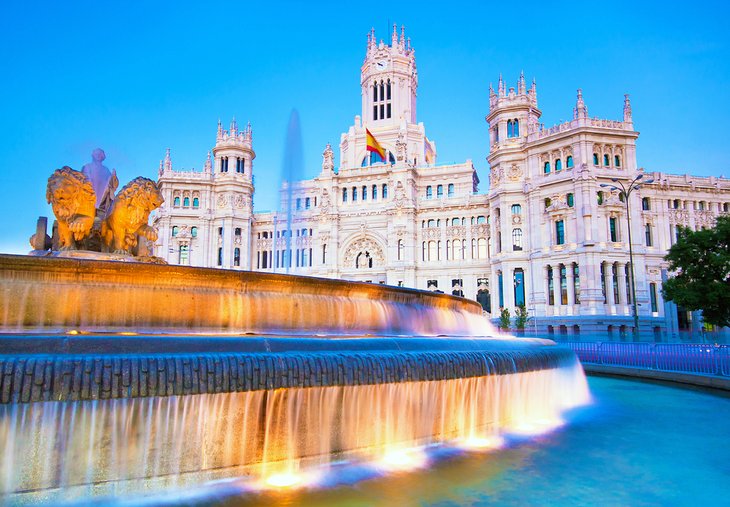
The famous Cybele's fountain (Fuente de Cibeles) stands in a major traffic intersection and is one of the most emblematic monuments in Madrid. Created in 1782 by Francisco Gutiérrez and Roberto Michel, the impressive traffic-stopping fountain depicts the Roman Goddess Cybele riding a lion-drawn chariot. Behind the fountain is the Palacio de Cibeles cultural center, which hosts art exhibitions and workshops, conferences and concerts. The Centro Palacio de Cibeles has two restaurants: the Colección Cibeles caféteria and the Cibeles Palace restaurant.
Nearby (via Calle de Alcala) is one of Madrid's most popular shopping streets, the Gran Vía. Tourists will find many restaurants, hotels, and theaters on this bustling street. Just off the Gran Vía on Calle de Jovellanos, the famous Teatro de la Zarzuela offers renowned performances of zarzuela - a unique type of satirical opera with songs accompanied by classical Spanish guitar music.
7 Temple of Debod: An Ancient Egyptian Temple
In La Montaña Park (close to Plaza de España), visitors can see one of Madrid's most surprising monuments - an ancient Egyptian temple. A gift from Egypt, in thanks for Spain's help in saving the Abu Simbel temples during the building of the Aswan Dam, the Debod Temple was brought to Madrid in 1968. The temple was built for King Adikhalamani in the 2nd century BC and includes several shrines, a spacious hall, and a terrace on the upper level. Well-preserved original decorations are found inside, rare for an archaeological site. Peaceful gardens surrounding the monument feature reflective pools and a fountain, creating a magical effect.
8 Goya Frescoes at Ermita de San Antonio de la Florida
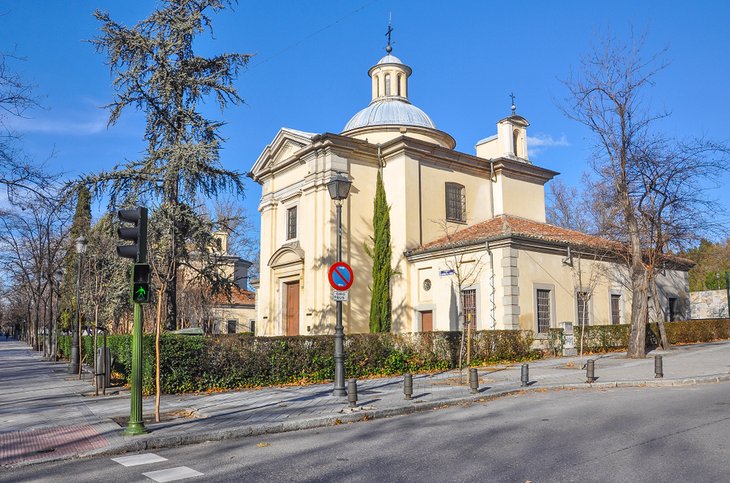
Perhaps the least visited of Madrid's major art treasures are the stunning frescoes painted by Francesco Goya that fill the Hermitage of San Antonio de la Florida. The little chapel, along the banks of the Manzanares River behind the Royal Palace, hosts an annual festival in honor of Saint Anthony of Padua, but it's the interior that has become a place of pilgrimage for art lovers. Among Goya's finest works, the frescoes illustrate the theme of the miracle performed by Saint Anthony, while also depicting scenes of everyday life in Madrid. The frescoes reveal Goya's boldness of artistic style and revolutionary painting techniques. They were painted at a turning point in Goya's career and are considered a precursor of modern painting. The chapel is designated a national monument and is no longer used for religious services to protect the frescoes.
9 Basilica de San Francisco el Grande
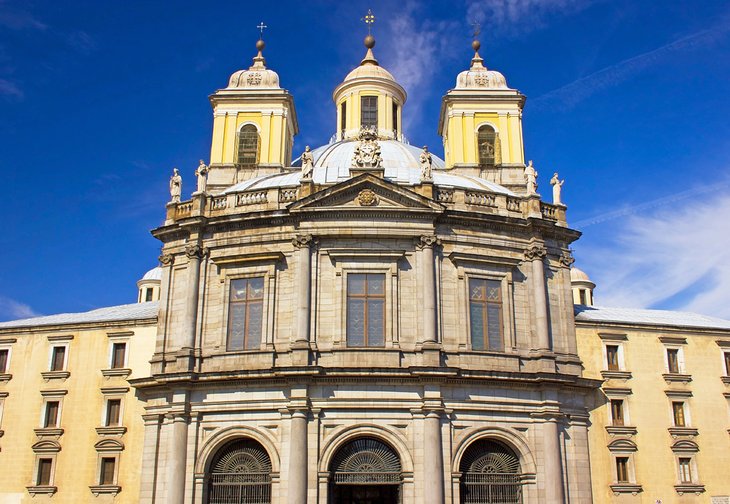
The Church of San Francisco el Grande was built in 1761 for a Franciscan friary. The church was designed by Fray Francisco Cabezas, who modeled the architectural plan on the Church of Santa Maria in Campitelli in Rome. The Neoclassical facade and dome were added in 1770. The interior features a circular plan with an inspiring dome and six chapels. The chapels display paintings by Maella, Velázquez, and Goya. In the first chapel on the left are Goya's San Bernardino, and Velázquez's Saint Bonaventure and The Appearance of the Virgin to Saint Anthony. The church also contains a painting of Saint Bonaventure by Zurbarán. The church museum displays a variety of religious art and artifacts.
10 Puerta de Alcalá
This grand Neoclassical triumphal arch was commissioned by King Carlos III to celebrate the arrival of the monarchs to Spain's capital city. The monument was designed by Francesco Sabatini and built between 1769 and 1778. Nearly 30 meters high, the elegant granite entrance gate makes a grand impression. The facade is adorned with sculptures, capitals, and decorative reliefs. Just below the monument, at 54 Calle de Alcala, is Madrid's fanciest patisserie shop Pastelería Vait, which offers exquisite cakes, cookies, pastries, chocolate candies, and hot chocolate.
(thanks to: www.planetware.com)
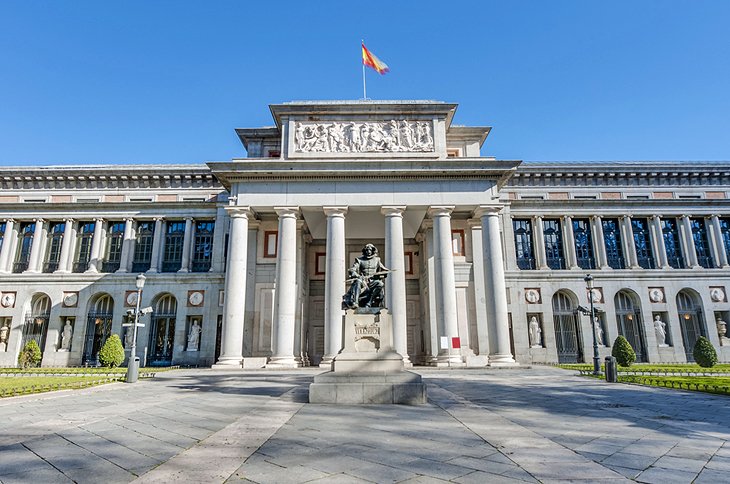
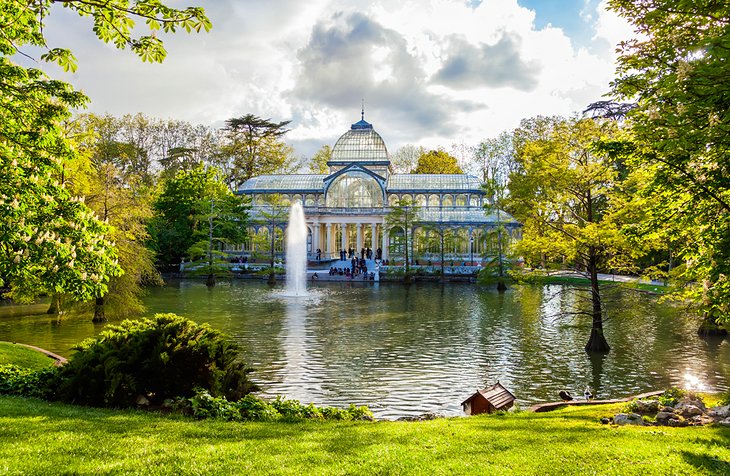
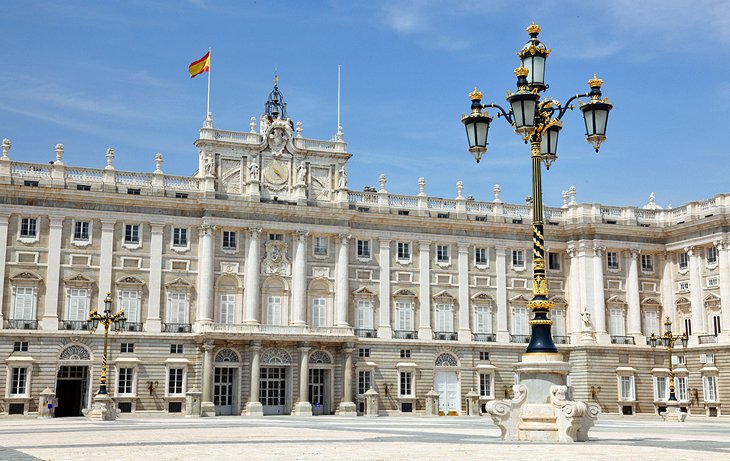
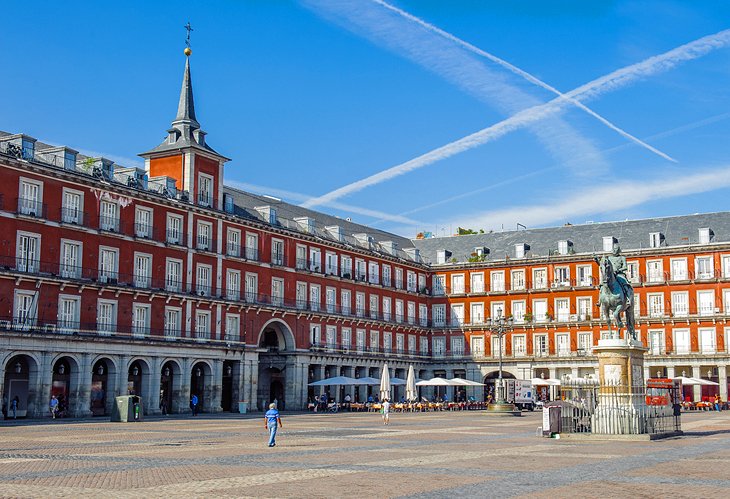
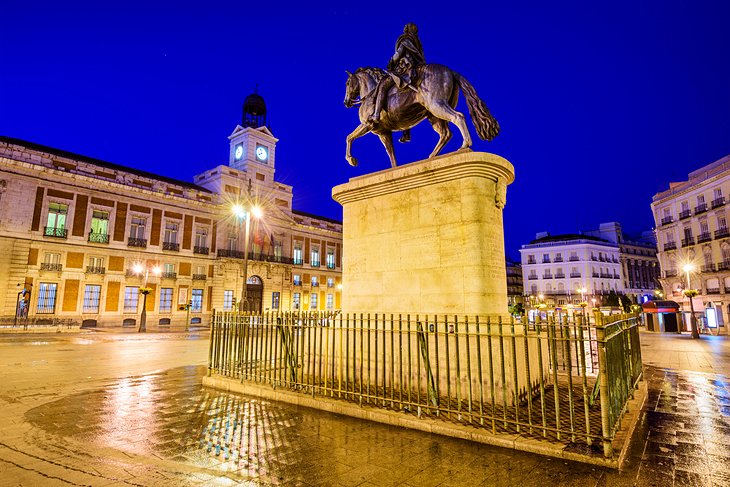
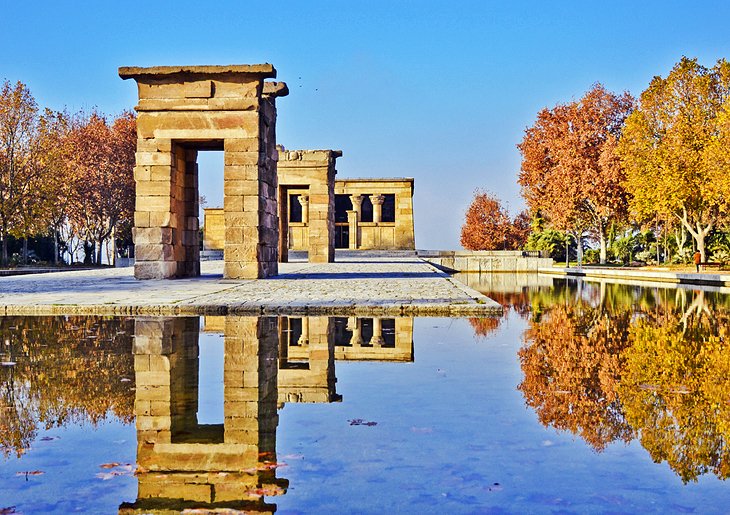
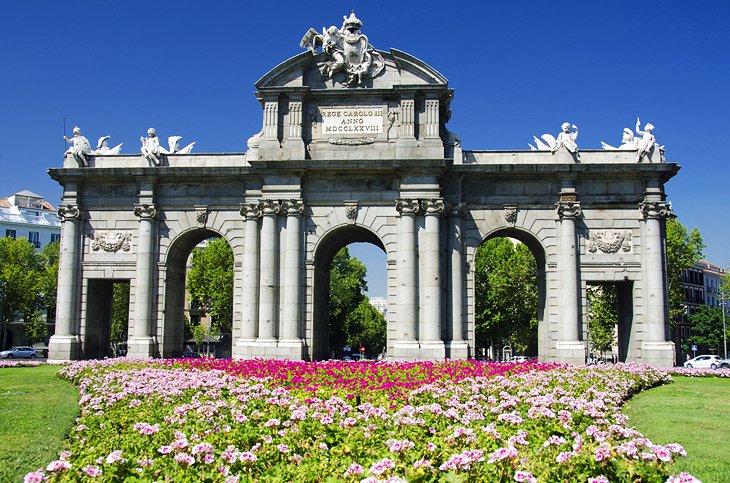
Comments
Post a Comment